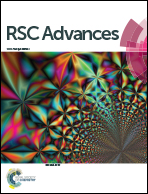Electroreduction of Er3+ in nonaqueous solvents
Abstract
The electroreduction of Er3+ in propylene carbonate, N,N-dimethylformamide, or a variety of quaternary ammonium ionic liquids (ILs) was investigated using [Er(OTf)3] and [Er(NTf2)3]. Systematic variation of the ILs' cation and anion, Er3+ salt, and electrode material revealed a disparity in electrochemical interactions not previously seen. For most ILs at a platinum electrode, cyclic voltammetry exhibits irreversible interactions between Er3+ salts and the electrode at potentials significantly less than the theoretical reduction potential for Er3+. Throughout all solvent–salt systems tested, a deposit could be formed on the electrode, though obtaining a high purity, crystalline Er0 deposit is challenging due to the extreme reactivity of the deposit and resulting chemical interactions, often resulting in the formation of a complex, amorphous solid–electrolyte interface that slowed deposition rates. Comparison of platinum, gold, nickel, and glassy carbon (GC) working electrodes revealed oxidation processes unique to the platinum surface. While no appreciable reduction current was observed on GC at the potentials investigated, deposits were seen on platinum, gold, and nickel electrodes.



 Please wait while we load your content...
Please wait while we load your content...